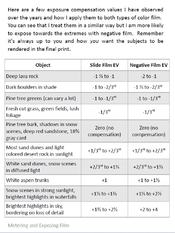KerrKid
Member
I got my Vivitar 45 light meter today. I need to do more testing but I believe it's fairly accurate. It tends to match up with the phone app for the most part. I have to put the phone app on "average". My X-570 seems in agreement. My SRT101's are off. Maybe the 201 as well. Kind of a bummer, but using the light meter with them isn't the end of the world.
I like the needle and lollipop on the Vivitar 45. Very easy to line up quickly and the scale isn't too difficult to read.
I like the needle and lollipop on the Vivitar 45. Very easy to line up quickly and the scale isn't too difficult to read.





